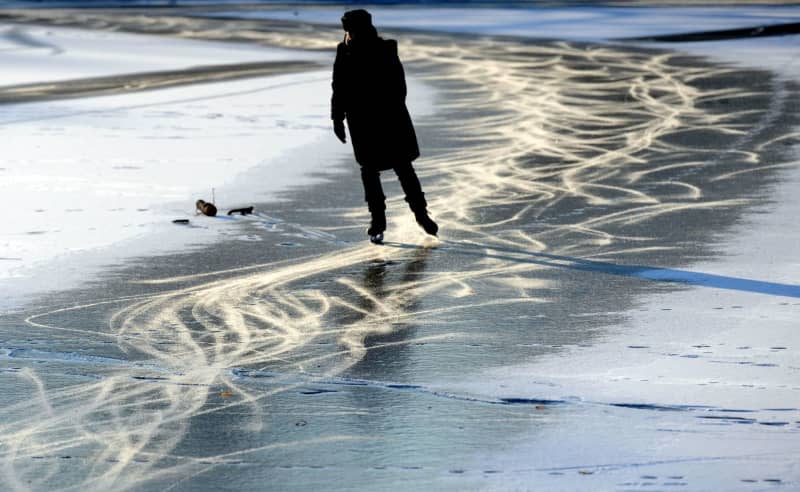Will this ice hold me? You could be dead in 10 minutes if it doesn't

"Look, the lake has frozen over! Let's see if we can walk on it." Famous last words like these are too often said without any consideration for just how dangerous it is to walk on freshly formed ice.
Experts in Germany - where emergency services regularly pull people, dead and alive, from icy waters - are calling on people to think before heading out on the ice.
"It can be deadly," warns Josephine Giessel, Chairwoman of the Life Saving Association (DLRG) in the German city of Halle. This is because you can't tell how thick or even the layer of ice on a body of water is.
The ice cover on lakes should be at least 15 centimetres thick in order to be able to walk on it safely. For rivers and other flowing waters, it must be at least 20 centimetres, according to Giessel.
But there's no safe way to easily work this out yourself when you happen across a frozen lake. You need to "find out beforehand, don't just go out on the ice," Giessel says, and the local authorities will often be able to provide information on the safety of ice surfaces when it dips below zero.
It often only takes a few moments from realising "Oh, the ice is cracking" to it fully breaking, sending you plummeting into icy waters below.
The problem is that sudden contact with almost-frozen water can send the body into shock. Blood is increasingly transported to the centre of the body as the body tries to protect itself from hypothermia.
"You notice it in your fingers and feet. You become sluggish and at some point it's over," describes Josephine Giessel.
The body can withstand these conditions for around 10 minutes before death occurs.
What makes the situation even more dangerous is the weight of the soaked clothing, which pulls the body downwards.
To make matters worse, if you have walked out on a partially frozen river, then the current of water beneath the brittle ice sheet can even push you under the ice cover, making it extremely difficult to get back out.
What should you do if you realise that someone has collapsed through some ice? "First, call the emergency services, then try to get to the person - and don't put yourself in danger," says Giessel, summarizing the most important rules.
Where possible, the rescue should always take place from the shore. The DLRG rescue experts say aids like a branch, plank, ladder or even a garden table or bench can be used - whatever helps you reach the person in the water without forcing you to head out onto it yourself.
Volunteers should hand these to person so that they can use them to pull themselves out of the water.
If the person cannot get themselves out of the water this way, then a volunteer needs to get onto the ice. The most important thing here is that she or he should never stand up while approaching the collapsed ice spot.
The best method is to lie down on the ice - with arms outstretched, preferably on a board - and push yourself towards the hole. A tool that you can hand to the person who has fallen in is also a must for this rescue attempt.


